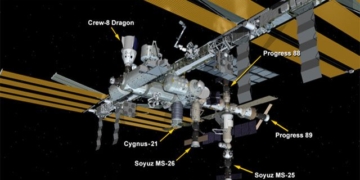Most operating systems today support multi-boot solutions across different partitions of a hard drive. But have you ever thought about running multiple operating systems simultaneously? Virtualization can help you achieve that.
To successfully virtualize your PC, you must ensure you have a significant amount of RAM – at least 512MB – along with a relatively large amount of free hard drive space and a reasonably fast processor.
 First, let’s explore the concept of “virtualization.” Virtualization allows your host operating system to run multiple different operating systems in either windowed or full-screen mode. The host operating system – whether it’s Linux or Windows – along with virtualization software, allocates resources for the virtual operating systems to function smoothly.
First, let’s explore the concept of “virtualization.” Virtualization allows your host operating system to run multiple different operating systems in either windowed or full-screen mode. The host operating system – whether it’s Linux or Windows – along with virtualization software, allocates resources for the virtual operating systems to function smoothly.
Virtualization software enables you to install an additional virtual operating system without needing to reformat partitions or restart the host operating system, allowing you to experiment with various configurations. You can even test network setups between the host OS and the virtual OS. Additionally, if you encounter any malware while browsing the internet, it will only threaten the virtual operating system and not affect the host OS.
The Art of Xen
Xen 3.0 from XenSource is an open-source and free server virtualization software compatible with various Linux distributions. Xen 3.0 comes pre-installed with versions of SuSE Linux 10.1, OpenSuSE 10.1, Red Hat Enterprise Linux 5, and Fedora Core 5.
Xen operates as part of the Linux kernel, providing excellent performance. As long as you provide enough memory, the virtual operating system can run as fast as the host operating system. However, Xen does have limitations, as all operating system versions need to be programmed to be compatible with Xen, and it is not compatible with Windows.
VMWare: Not the Best Choice
If you are using Windows, VMWare would be your choice. There is currently a version of VMWare Virtual Server. This software offers similar benefits to Xen 3.0, but the speed of the virtual operating system may not meet your expectations.
Once you successfully install VMWare Virtual Server, you can immediately install another operating system on the virtual machine or download many pre-installed and configured virtual operating systems compatible with VMWare at http://www.vmware.com/vmtn/appliances/directory/.
Microsoft’s Product
If you want to experiment with virtualization in a different way, consider trying Microsoft’s product – Microsoft Virtual Server 2005 R2. However, to use this product, you need to be quite proficient in virtualization. This software is compatible only with Windows XP Professional and Windows Server 2003.
Hoàng Dũng




















































